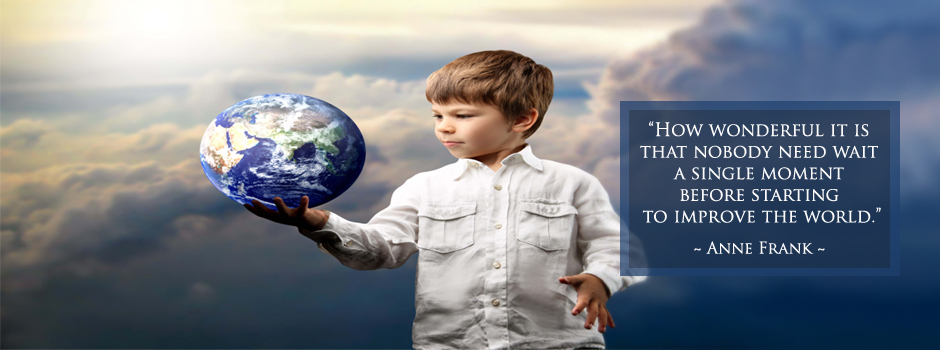
One Community Welcomes Yulia Nakonechna to the One Community Pioneer Team
 One Community is excited to welcome Yulia Nakonechna to the Pioneer Team. Yulia is a PhD Professor of Linguistics, Private Language Tutor, Children’s Supervisor, Facilitator, and Teacher joining the team working on our transformational education program. Yulia has spent nine years intensively studying languages and foreign literature and is fluent in Ukrainian, Russian, and English, with a basic knowledge of French and German as well. She holds a PhD in linguistics and has been teaching for Kyiv National Taras Shevchenko University since 2008. She has extensive experience with young children (aged from infancy to seven years old and more) that she has combined with her participation in a Children’s Early Development Education Program (based on Rudolph Steiner’s Waldorf School and Helen Doron’s teaching principles) helping her become an even more well-qualified children’s supervisor, facilitator, inspirer, and teacher.
One Community is excited to welcome Yulia Nakonechna to the Pioneer Team. Yulia is a PhD Professor of Linguistics, Private Language Tutor, Children’s Supervisor, Facilitator, and Teacher joining the team working on our transformational education program. Yulia has spent nine years intensively studying languages and foreign literature and is fluent in Ukrainian, Russian, and English, with a basic knowledge of French and German as well. She holds a PhD in linguistics and has been teaching for Kyiv National Taras Shevchenko University since 2008. She has extensive experience with young children (aged from infancy to seven years old and more) that she has combined with her participation in a Children’s Early Development Education Program (based on Rudolph Steiner’s Waldorf School and Helen Doron’s teaching principles) helping her become an even more well-qualified children’s supervisor, facilitator, inspirer, and teacher.
Learn more about Yulia, her qualifications, and her journey to One Community on Yulia’s Pioneer Bio Page.
Learn more about the rest of the Pioneer Team, on the Pioneer Team Page.
One Community Featured on The Bridge with Jim Hamell to Discuss Open Source Sustainability
The Bridge – Jae Sabol & Lee Camp from Jim Hamell on Vimeo.
Open Source Sustainability
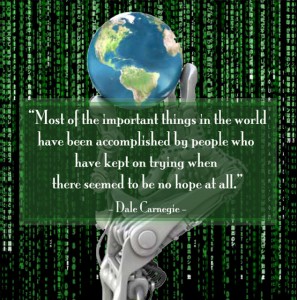 Jae Sabol, the Executive Director of the One Community Non-profit Organization, was interviewed by Jim Hamell for The Bridge last week to discuss open source sustainability and One Community’s part in the global open source and free-sharing movement. Topics of discussion included some of the things we are working on right now, converting the whole planet over to a collaboration of sustainable and open source communities, villages, and cities working together, solution based thinking and how it relates to both evolution and the scientific method, and how open source transcends political ideology.
Jae Sabol, the Executive Director of the One Community Non-profit Organization, was interviewed by Jim Hamell for The Bridge last week to discuss open source sustainability and One Community’s part in the global open source and free-sharing movement. Topics of discussion included some of the things we are working on right now, converting the whole planet over to a collaboration of sustainable and open source communities, villages, and cities working together, solution based thinking and how it relates to both evolution and the scientific method, and how open source transcends political ideology.
Jae’s interview is the first of the two interviews and is about 25 minutes long.
Two Completed Interviews
 In the past week One Community founder Jae Sabol completed two interviews about One Community and this swiftly developing open source model for self-propagating teacher/demonstration communities, villages, and eventually cities. The first was a radio show interview that is expected to play on PBPK 90.1 FM in Southern California on Friday the 15th of February and then again two weeks later on KKMJ 95.5 FM and KJCE 1370 AM out of Austin, Texas. The second was a Skype Video interview with Jim Hamell of The Bridge. Both interviews went great and we’ll be posting links here as soon as they are available.
In the past week One Community founder Jae Sabol completed two interviews about One Community and this swiftly developing open source model for self-propagating teacher/demonstration communities, villages, and eventually cities. The first was a radio show interview that is expected to play on PBPK 90.1 FM in Southern California on Friday the 15th of February and then again two weeks later on KKMJ 95.5 FM and KJCE 1370 AM out of Austin, Texas. The second was a Skype Video interview with Jim Hamell of The Bridge. Both interviews went great and we’ll be posting links here as soon as they are available.
One Community Welcomes Amber Berg to the Pioneer Team
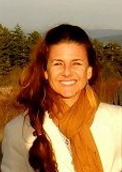 One Community is excited to welcome our newest Pioneer, Amber Berg, to the team. Amber has dedicated her life to healthy living and the environment and has had a similar vision to One Community for over 10 years. Her diverse background of education and experience in the health and sustainability industries include a PhD of Eco-Applied Psychology, Masters of Science in Oriental Medicine, Bachelor of Arts in Animal Behavioral Psychology degree, and she is also Licensed Acupuncturist. In addition, she minored in Business and has over 6 years experience as a property manager and 5 years experience as the Chief Operations Manager of an eco-adventure activity provider in Hawaii. She has been published in the “American Acupuncturist” journal and is a Certified EMT as well.
One Community is excited to welcome our newest Pioneer, Amber Berg, to the team. Amber has dedicated her life to healthy living and the environment and has had a similar vision to One Community for over 10 years. Her diverse background of education and experience in the health and sustainability industries include a PhD of Eco-Applied Psychology, Masters of Science in Oriental Medicine, Bachelor of Arts in Animal Behavioral Psychology degree, and she is also Licensed Acupuncturist. In addition, she minored in Business and has over 6 years experience as a property manager and 5 years experience as the Chief Operations Manager of an eco-adventure activity provider in Hawaii. She has been published in the “American Acupuncturist” journal and is a Certified EMT as well.
CLICK HERE TO LEARN MORE ABOUT AMBER ON HER COMPLETE PIONEER BIO PAGE
SEGO Center Natural Pool and CAD Updated Images from This Week
The SEGO Center City Hub continues to move forward with huge help from our partners Andrew Sadera (Architect Drafter and Designer), Jennifer Engelmeier (Eco-pool and Spa Specialist and founder of www.LoveYourPool.com), Karl Harris (Architect Drafter, Designer, and founder of Harris Design & Technology Services), and Meg West (Landscape Architect, Permaculturalist, and founder of Meg West Design).
Here is the newest designs from Meg for the natural pool and eco hot tub:
Here are all 4 floors of the SEGO Center in CAD. We’re now working on adding the eco-hot tub and natural swimming pool shown above.
To simplify our details page we’ve also moved all the older images to a newly created page outlining this building from its very first sketches to where it is now:
Building Earth Homes: Earthbag Home Furniture Layout Possibilities for Pod 1
Pod one is the first of the seven different sustainable village models to be built because it is designed to demonstrate and teach building earth homes as one of the most affordable construction and living models available. It consists of sixty-four 150-200 square foot semi-subterranean earthbag hotel room styled cabanas built in pairs with a central sitting area designed for relaxation and growing a small shared garden. Like a hotel or dorm room, each dome will consist of a bed, dresser(s), and a small sitting area and desk. Communal use bathrooms and showers will be within a short walk and will integrate recycling of all water and a combination vermiculture and traditional septic eco-friendly bathroom. These earth home bungalows will be heated by rocket mass heaters and kept cool via the semi-subterranean construction and passive cooling. Electricity and heat for all homes and the central tropical dome will be provided by solar (see energy infrastructure page).
Here are the layout drawings we just finished to demonstrate what building earth homes like this will look like with built-in furniture.
RELATED KEY SUSTAINABLE INFRASTRUCTURE DETAILS
Application Form Updates are Complete!
We are happy to say that we just finished the complete update of our One Community Application Form! We hope what we have created from our two years of interviewing experience is helpful as a usable template for other forming communities and we invite anyone interested in joining One Community to apply!
We also just completed this outline page of our application, review, and interview process: https://www.onecommunityglobal.org/review-and-interview-process/
On other notes, we also just started to put together the first iteration of a framework for an open source collaboration space. We should launch it in the next few weeks with our vermiculture septic design, education program development details, and tropical dome greywater processing designs (part of Pod 1) simultaneously.
This open source collaborative space will feature:
- A copyable and modifiable archive of our component designs and research to this point
- Links to our ongoing research and development project overview pages and work spaces
- Links to the development templates and finished documents for projects and project componenets
New image updates on Pod 1 floor plans and the SEGO Center natural pool and eco hot tub are coming today or tomorrow as well.
Open Sourcing More of Our Internal Process: 2 New Pages Related to Internal Review and Productivity
What One Community is working on right now is arguably some of the most important developmental aspects of the entire project. We are a dedicated, organized, and professional team contributing weekly to an ever-evolving action list and seeking others excited to create this with us. The minimum anyone on this team can expect to contribute is about 10 hours a week and we have spent the last two years fine tuning how to work together for maximum effectiveness and developing a results based monitoring and evaluation process and Performance Management Template into what they now are: productive, efficient, and ongoing foundations for collaborative team leadership skills development.
TWO NEW PAGES WE’VE CREATED TO OPEN SOURCE SHARE OUR INTERNAL PROCESS
The first is our Results Based Monitoring and Evaluation Process page created to share:
- How this system is foundational to the phase of creation we are in no
- What makes up the minimum time investment expectations for being a Pioneer
- How we use “tangible contribution” to maintain focus and productivity on our priorities
The Second is our Performance Management Template for conducting 2-directional monthly performance management reviews. There are three primary team building objectives for this template and the monthly performance reviews we conduct:
1) Individual gives feedback to the Review Facilitator regarding community performance/experience
2) Review Facilitator(s) give feedback regarding individual’s performance
3) Facilitator and Individual co-create strategy for improvement of both #1 and #2
Open Sourcing our Photovoltaic Systems Design Process and Other Energy Infrastructure Details
One Community’s sustainable energy infrastructure is just one aspect of our blueprints for self-sufficient and self-propagating teacher/demonstration communities, villages, and cities strategy to be built around the world. Just as we will be showcasing a diversity of eco building methodologies and alternative food production options, so too will we showcase a diversity of alternative energy methodologies ranging from traditional generators to solar, wind, and newer technologies as they become available. Our initial system to supply for the energy needs of Pod 1, our aquaponics systems, and the Center of Peace community center is a tried-and-true 283 kWh photovoltaic solar power system.
This blog post is to open source the process used to design this system. For complete One Community energy details including pricing, assessment of other systems, and how we intend to meet our needs before this system is up and running:
CLICK HERE TO VISIT OUR COMPLETE SUSTAINABLE ENERGY INFRASTRUCTURE PAGE
CONSULTANTS ON OUR SUSTAINABLE ENERGY INFRASTRUCTURE
Doug Pratt: Solar Systems Design Engineer
JP Novak: Power Backup Systems Designer at Native Construction and Renewables
Lorenzo Zjalarre: Physicist and Energy Efficiency Expert
OUR PROCESS OF ARRIVING AT OUR PV SOLAR SYSTEM
Electric power requirements (see below) have been estimated by JP Novak of Build Native.com. The above system was then designed by Doug Pratt applying his 27 years of solar design and installation experience to confirm these estimates (below) seem reasonable. Estimating how people will use power in advance is always a guessing game. Humans are nothing if not variable and we anticipate that this system will almost certainly require some fine-tuning. We also anticipate that our group will learn from experience and probably become more energy aware and conservative with time. To help us gather data and fine-tune our process as part of our open source sharing, we will be using simple metering on all pods and the aquaponics systems. By doing this we will be able to identify “energy hogs” and share this data, our solutions, and the objective energy saving results of our solutions.
The total electrical use for Pod 1, aquaponics, and the Center of Peace community center, on a yearly average, is estimated to be 282.5 kWh per day. This is the figure used to size the solar electric system. In addition, all the AC appliances that were likely to be on simultaneously were totaled up. These included a percentage of lights, laptops, microwaves in the pods, along with all the aquaponics hardware, and most of the kitchen and community center lighting and hardware (including the hot tub). This max AC surge was about 76 kW and was the figure used to size the inverter pack.
| Pod 1 Power Requirements (64 Units) | |||||
| Appliance | Wattage | Hrs/day | Units | kWh/day | kWh/mo |
| |
|||||
| Light | 100 | 4 | 64 | 25.6 | 768 |
| Laptop | 80 | 5 | 32 | 12.8 | 384 |
| Hair Dryer | 1400 | 0.5 | 11 | 7.7 | 231 |
| Microwave | 1200 | 0.5 | 11 | 6.6 | 198 |
| Cellphone | 4 | 3 | 64 | 0.768 | 23.04 |
| Total | 53.468 | 1604.04 | |||
| |
|||||
| Aquaponics Power Requirements | |||||
| |
|||||
| Pumps | 500 | 24 | 3 | 36 | 1080 |
| Fans | 50 | 24 | 6 | 7.2 | 216 |
| Air Pump | 100 | 24 | 2 | 4.8 | 144 |
| Light | 100 | 2 | 4 | 0.8 | 24 |
| Total | 48.8 | 1464 | |||
| |
|||||
| Center of Peace Power Requirements | |||||
| (8 Suites/170 capacity dining room/3 Conference Areas/Laundry/Kitchen/Library) | |||||
| |
|||||
| Appliance | Wattage | Hrs/day | Units | kWh/day | kWh/mo |
| Satellite Dish | 50 | 24 | 2 | 2.4 | 72 |
| Computer | 300 | 2 | 15 | 9 | 270 |
| Multi-media Other | 250 | 2 | 3 | 1.5 | 45 |
| DVD Player | 50 | 2 | 3 | 0.3 | 9 |
| Stereo/Music | 1000 | 2 | 3 | 6 | 180 |
| Lighting | 100 | 4 | 50 | 20 | 600 |
| Hot Tub | 20000 | 4 | 1 | 80 | 2400 |
| Maytag Washer (Maxima 4.3 cuft) | 200 | 2.5 | 5 | 2.5 | 75 |
| Maytag Dryer (Maxima 7.4 cuft) | 1000 | 2.5 | 5 | 12.5 | 375 |
| Refrigerator (40 cuft) | 1000 | 6 | 2 | 12 | 360 |
| Vacuum Cleaner | 1000 | 0.5 | 2 | 1 | 30 |
| Walk-in Freezer (8′ x 6′ x 8′) | 0 | 2280 | |||
| Walk-in Cooler (10′ x 20′ x 8′) | 0 | 1600 | |||
| Dishwasher | 2000 | 4 | 1 | 8 | 240 |
| Stand Mixer (30 qt.) | 2000 | 1 | 1 | 2 | 60 |
| Griddle (3′ x 2′) | 1500 | 2 | 1 | 3 | 90 |
| Oven | 10000 | 2 | 1 | 20 | 600 |
| Total | 180.2 | 9286 | |||
| |
|||||
| Grand Total | 282.468 | 12354 | |||
SOLAR SIZING
Okay, so how do we go from kWh per day to PV arrays on the ground, and battery sizing, and inverter sizing, etc.? Here’s how Doug described it for us:
Looking at available sunlight for the property: The National Renewable Energy Labs (NREL) went out and measured sunlight availability for several hundred sites across the U.S., and they did it for 30 years. 1960 thru 1990. So we’ve got a nice average. This is the “NREL Redbook”, and is the standard source for estimating sunlight availability at any point in the U.S., for any time of year. For our location we have a yearly average of 5.9 hrs of peak sun per day. Peak sun? What’s that? That’s the scientific definition of full sunlight on the Earth’s surface. A “full sun” is defined as 1,000 watts per square meter. Now it’s immediately apparent that’s an impossibly round figure. And you’re right. Reality on the ground varies widely depending on humidity, altitude, sun angle, and a host of other variables called “the weather.” What NREL has done for us is to take all the hours of sunlight on a particular site and condense it down, as if all the hours were at perfect solar noon – 5.9 peak hours in this case. Which is pretty handy, because PV modules are rated to produce a certain amount of power at “full sun.” If we know a site averages a certain number of peak hours of sunlight, we can closely estimate how much power a given PV array will deliver. Now, a warning here, we’re talking about the weather. And it varies from year to year. In fact the NREL data clearly demonstrates that it varies by plus or minus 9% yearly. So it’s not worth getting too gnat’s ass accurate with our system sizing, as there’s bound to be yearly variations.
5.9 hours is the yearly average sun for our location. In December, at the lowest, it drops to 4.4 hours, which is still pretty good as solar sites go. For a December site, it’s excellent, and we’re going to use the 4.4 hour figure for PV system sizing. Now we know how many kWh per day your complex needs, we know what the average sun is going to be in December, what’s left is system efficiency. How much is lost to wiring, dusty modules, batteries, inverters, etc? Real world measured efficiency for battery-based systems ranges from 50% to 70%. Since much of the energy in this system will be used during daylight hours and will not need to be stored in batteries, I’m giving this system a fairly high 65% efficiency rating. This is completely seat of the pants estimation based on experience with large battery- based systems.
So we’ve got a 282.5 kWh nut to crack with 4.4 hours of peak sun and a 65% efficient collection and delivery system.
282.5 kWh / 4.4hrs / 65% = 98.77 kW of PV required. How many of what PV module is left until later, probably until right before purchase as prices and module brands have been shifting rapidly.
BATTERY SIZING
Batteries are the largest expense for the system. Lead prices just keep rising as the world becomes more industrialized. Lead-acid batteries still represent the best buy for remote systems. (And before you ask, lithium-ion batteries are still at least 4-5 times more expensive, and haven’t proved they’ll last longer than lead-acid. Who hasn’t had problems with phone or laptop batteries?)
When sizing off-grid battery packs we usually aim for about 2 to 3 days worth of storage capacity. Less capacity means the batteries get cycled deeply on a day to day basis, which isn’t good for life expectancy. More capacity raises the cost to where it’s cheaper to start the backup generator to meet the occasional shortfall.
Batteries are sized by amp-hours rather than watt-hours, so we have to divide our watt-hour figure by the battery voltage – 48-volt in this case. (If you remember your high school physics, watts divided by volts equal amps. Or volts times amps equals watts.) We also have to factor in how deeply we’re willing to cycle our batteries. The true deep-cycle batteries we’ll be using will tolerate cycles down to 80% depth of discharge (DOD), but again, deep cycles aren’t good for life expectancy, so we’re going to draw the line at 70% DOD. Considering the high quality of the Unigy II batteries we’ll be using, along with reasonable cycle depth, this battery pack should enjoy a 15 to 20 year life expectancy. By which point lithium-ion batteries may be a better choice. That’s a bridge to cross when we get there.
282,500 watt-hours x 2.5 days / 48 volt / 70% = 21,019 amp-hours @ 48v. This is one honkin’ BIG battery! To help make it more manageable, we’re going to use an SMA Sunny Island Multi-Cluster inverter package which divides the inverters up into four separate nodes, with each node having its own battery pack. And that brings us to…
INVERTER SIZING
Doug chose the Sunny Island Multi-Cluster inverter package for several reasons. It’s highly reliable and adaptable German engineering at its best. It consists of 12 individual Sunny Island 6kW inverters wired as four groups of 3 inverters each. So 12 x 6kW = 72kW, very close to the max AC surge requirement we estimated earlier. (Each 6kW Sunny Island can deliver 8.4kW for 1 minute, or 11.0kW for 3 seconds for true surges.) Each node of 3 inverters will cover the A, B, and C phases of your 208vac 3-phase system. As power demand increases, the Multi-Cluster will activate more nodes as needed. So we won’t have a lot of inverter capacity turned on, using power, and just waiting for something to happen. Capacity will only get turned on as needed. Each node has its own battery pack, which will make the individual packs more manageable. And if any one inverter or battery pack needs service, that node can be shut down, while the rest of the system will still operate normally. Also, the Sunny Island system uses conventional high-voltage grid-tie inverters to process the incoming PV power. So transmission from PV arrays hundreds of feet away are much less of a problem.
MAINTENANCE AND CONTROL
While this system is designed to be largely automatic and self-sustaining, there will be one or more designated maintenance and service personnel for the community. This person will be in charge of system operations, and trained to be familiar and very comfortable with the Sunny Island system. In addition, a great deal of system automation is possible with the Sunny Islands. As battery state of charge drops to critical levels, the Island can initiate start-up of backup generators, and/or shut down selected loads (the hot tub for instance). Routine maintenance includes cleaning PV arrays, snugging up battery cables, and monitoring the Multi-Cluster for any warnings or problems. For this reason, someone dependable and knowledgeable will be “in charge” of the system at all times.
One Community Welcomes New Pioneer Bear Stauss to the Pioneer Team
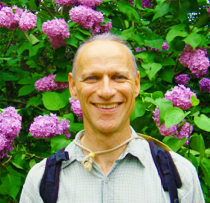 One Community is happy to welcome Bear Stauss to the One Community Pioneer Team! Bear has a BS in Agricultural Production specializing in Ornamental Horticulture & Landscape Design/Recreation Area Management and brings years of experience as an Experienced Wildland Fire Suppression Manager (“smokejumping” out of airplanes in remote locations), Property Manager, and probably one of the most well travelled people you’ll ever meet!
One Community is happy to welcome Bear Stauss to the One Community Pioneer Team! Bear has a BS in Agricultural Production specializing in Ornamental Horticulture & Landscape Design/Recreation Area Management and brings years of experience as an Experienced Wildland Fire Suppression Manager (“smokejumping” out of airplanes in remote locations), Property Manager, and probably one of the most well travelled people you’ll ever meet!
To read more about Bear’s experience, skills, and his journey to One Community, please visit his bio page: Bear Stauss Bio
 One Community
One Community

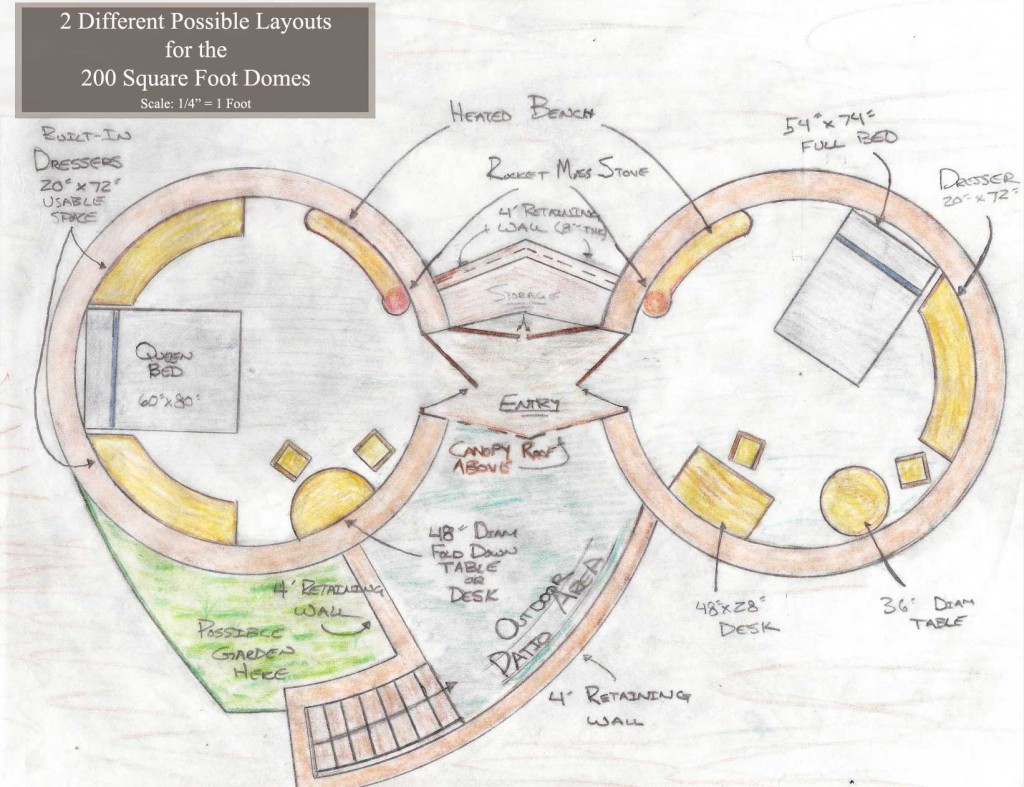

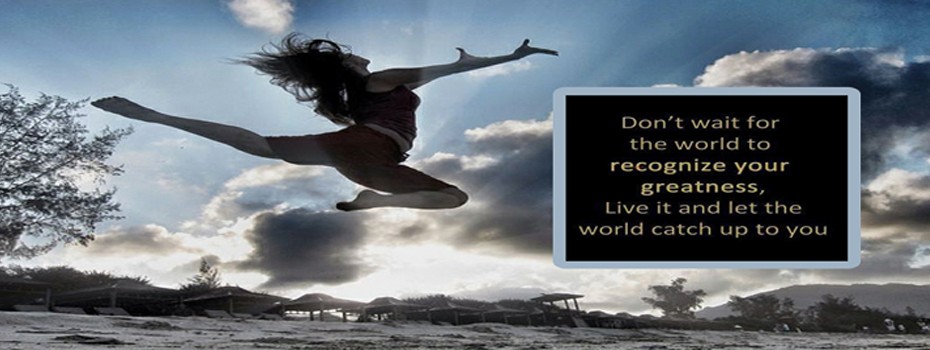




Connect with One Community